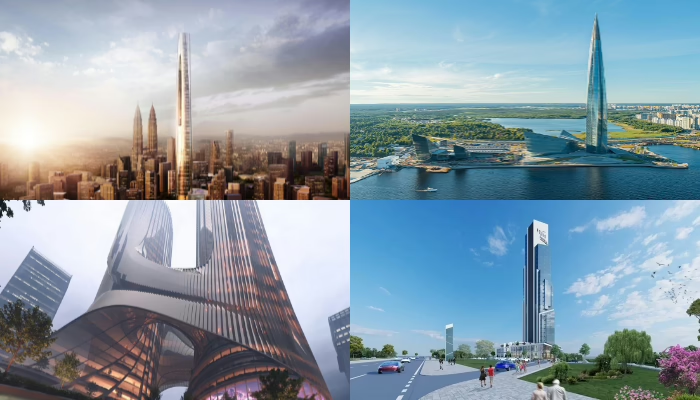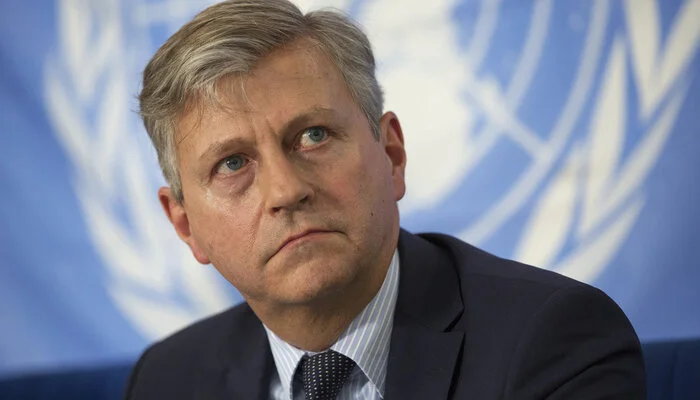What the Future Holds for the Tallest Towers

Burj Mubarak Al Kabir

The Burj Mubarak Al Kabir will become the tallest building in the world when completed. Standing at 1,001 meters, it surpasses Dubai’s Burj Khalifa by 170 meters.
How to Schedule Calls on WhatsApp
This architectural wonder is set to rise in Silk City, Kuwait, an ambitious development linked to China’s Belt and Road Initiative. Designed to house 7,000 residents and workers, the skyscraper will combine residential, hotel, and office spaces.
Kuwait’s harsh weather has shaped the building’s design. Strong winds, known as shamal, and frequent sandstorms are common. To combat these, the tower uses three twisting, interlocking structures for stability. Estimated to cost $132 billion, the Burj Mubarak Al Kabir will be a marvel of engineering. It is expected to be completed by 2035.
New Tradewinds Square Tower

In Kuala Lumpur, the New Tradewinds Square Tower was supposed to redefine Malaysia’s skyline. The 775-meter skyscraper aimed to overshadow the city’s famous Petronas Towers, which stand at 432 meters.
Nicknamed “the needle,” the design was sleek and futuristic. Unfortunately, construction stopped in 2018, and the project now seems abandoned. If completed, it would have been Malaysia’s tallest building. For now, it remains an unfulfilled dream.
Lakhta Centre II

The Lakhta Centre II will dominate Europe’s skyline. Situated in St. Petersburg, it aims to be the tallest building in Europe at 703 meters.
The tower will rise next to the Lakhta Centre, which currently holds the title at 462 meters. Scheduled for completion by 2030, this office skyscraper will symbolize modern Russia’s architectural ambitions.
Facing the Gulf of Finland, it promises stunning views and innovative design.
Shenzhen Tower

China’s Shenzhen Tower is set to stand 642 meters tall. This mixed-use tower will host offices, hotels, residential spaces, and civic areas.
The Shenzhen Tower focuses on sustainability. Its design includes sky gardens, which bring greenery to urban life. These spaces aim to improve air quality and reduce stress in a bustling city.
The tower also features a stepped-back facade to collect rainwater. Architects estimate it could replace the building’s annual water usage, making it an eco-friendly marvel.
Nexus Tower

The Nexus Tower in Shenzhen takes a bold approach. At 595 meters, it abandons the traditional linear design for three interconnected segments of varying heights.
This design allows more natural light and airflow. To counterbalance wind forces, the architects used a stable tripod-like structure.
The tower will primarily host offices and retail spaces but also includes a 14-story hotel at its top.
Asia and the Middle East Lead the Race
The race for the tallest buildings is shifting to Asia and the Middle East. Cities like Dubai, Shenzhen, and St. Petersburg are at the forefront of innovation. Their projects are reshaping global skylines and highlighting regional ambitions.
These skyscrapers are more than structures. They represent progress, resilience, and the human desire to push boundaries.
Why Skyscrapers Matter

Skyscrapers are more than tall buildings. They solve urban space problems, offer iconic designs, and symbolize power. By building vertically, cities maximize land use and provide spaces for work, living, and leisure in a single location.
They also inspire awe. From an engineering perspective, these structures are feats of human ingenuity. For residents and visitors, they represent dreams realized.
Reaching for the Skies
From Kuwait’s Burj Mubarak Al Kabir to Shenzhen’s Nexus Tower, skyscrapers embody humanity’s quest for greatness. Each design is unique, tackling challenges from weather to sustainability.
As these towers rise, they remind us of our potential. Even without wings, humans will always aim for the skies. Skyscrapers are proof that no height is unreachable.
Follow Day News on Google News, Instagram, YouTube, Facebook, Whats App, and TikTok for latest updates














